When a manufacturer creates a tire or wheel, no two are ever exactly alike. That means they are different weights — even if it’s by a fraction of an ounce. Those small differences can cause issues, which is why we balance the wheel-tire assemblies on every vehicle we service. But how do you know if your tires and wheels need to be rebalanced? We have some quick tips.
Tire balancing is a tune-up for each of your wheel-tire assemblies. Balancing helps ensure weight is evenly distributed around the entire circumference of the tire and wheel. Balancing a wheel-tire assembly is done with small weights.
The common symptoms of an out-of-balance wheel-tire assembly are uneven and faster tread wear, poor fuel economy, or vibration in the steering wheel and/or floorboard that gets worse at faster speeds. When all areas of the wheel-tire assembly are as equal in weight as possible, the tire will roll smoothly. This helps improve tread wear. Balancing also contributes to overall ride comfort.
Imbalanced tires can wobble or hop up and down, causing vibration. If a front tire isn’t properly balanced, you’ll likely feel vibration in the steering wheel. If the problem is in the rear, you’ll feel shaking in the seat or floor.
Everyday wear on tires and wheels can cause an imbalance. Plus, if a wheel weight comes off, if you hit a curb or pothole, or if you get a flat repaired, your wheel-tire assembly can get out of balance.
When a wheel-tire assembly is especially out-of-balance, you’ll likely know it right away. You’ll feel it in the steering wheel or floorboards. A thump-thump-thump sound that gets louder at lower or higher speeds might also be an indicator. Here are a few signs that you should get yours rebalanced.
You might need an alignment, or your tires and wheels are out of balance. Les Schwab has the expertise to check your vehicle, make recommendations, and get you back on the road.
Les Schwab has the expertise to check your vehicle, make recommendations, and get you back on the road.
If the tread on your tires appears to wear too quickly, it could be an out-of-balance wheel-tire assembly.
Vibration in the steering wheel when driving could be caused by an out-of-balance wheel-tire assembly. It could also be a bent wheel, a damaged tire (which won’t be fixed by balancing), worn suspension parts or other aging components. If you feel a vibration, don’t wait. Get to Les Schwab and let our pros take a look.
It’s advisable to get your wheel-tire assemblies balanced with every tire rotation. Additionally, anytime you get new tires, balancing should be part of the new-tire package. Other times to consider rebalancing include when you hit a curb, pothole, or other debris that breaks off or damages a balance weight, if you get a flat repaired, or anytime you notice uneven tread wear and vibrations.
At Les Schwab, tire balancing and rotation are done at the same time. However, they aren’t the same service. Tire rotation is when a vehicle’s front and rear wheels are switched to even out tread wear. Since both require removing each wheel, it’s convenient to do them at the same time.
Les Schwab Tip: Do you leave your car or truck parked in one spot for months at a time? Flat spots could develop in the tires, causing balance issues. This can go away after a few miles of driving. But if not, stop by Les Schwab.
Rebalancing is done in a tire shop by putting the wheel-tire unit on a tire balancing machine that takes measurements to pinpoint lighter or heavier areas. Adjustments are then made to account for these weight differences. The best time to get it done is when tires are being rotated, both for convenience and because you might have a tire out of balance on the rear of the vehicle and won’t feel it until it is moved to the front.
Here’s how it’s done:
A tire mounted on a wheel is attached to a tire balancing machine.
The wheel is spun while vibration measurements are taken. This tells the tech if the weight is spread evenly, how much weight to add and where on the wheel to attach it.
If an imbalance is found, the technician may be able to rebalance and adjust the weights (adding more). But sometimes it requires the tech to also reposition the tire on the wheel and then rebalance. This is because a heavy spot on the wheel and on the tire can sometimes line up together, causing a greater imbalance that needs to be corrected.
Though both should be part of regular auto maintenance, balancing isn’t the same as getting an alignment. Wheel alignment corrects the angles of the tires so they travel in the same direction and properly make contact with the road. Alignment reduces uneven tire wear and extends the life of your tires.
Alignment reduces uneven tire wear and extends the life of your tires.
The benefits of a balanced wheel-tire assembly include a smoother ride, as well as money saving benefits such as less tread wear, better gas mileage, and less strain on many parts of your vehicle.
Properly balanced wheel-tire assemblies can add up to more tread life, increased fuel economy, and less wear and tear on your vehicle. Les Schwab has the tools and know-how to get yours done right. If you have a set of Les Schwab tires, come on by and we’ll rebalance them for free. It’s part of our Best Tire Value Promise. Didn’t buy your tires here? We’ll be happy to take a look, give you an estimate, and get the job done right.
Imbalance is one of the situations many people don’t want to encounter while driving because it will make them have a bad driving experience. So, how to tell which tire is out of balance?
So, how to tell which tire is out of balance?
In fact, many ways will help you realize this situation, such as:
The following article will guide you in detailed information. Let’s follow along!
Unbalanced Tires SymptomsSymptoms Of UnbalanceOne of the first signs that your new wheels are out of balance is that the car will shake very vigorously, especially when traveling at high speed. If not adjusted in time, these unbalanced wheels can affect you and even cause an accident.
Rapidly running out of fuel is the second sign of an unbalanced one. You will notice a sudden drop in energy as the engine has to try to use more power to move the vehicle.
In addition, you may also hear humming or hissing noises, and their levels will increase as the speed increases.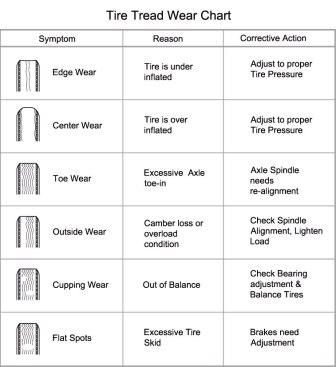 It will reduce your driving experience.
It will reduce your driving experience.
Besides, if you notice that the car is tilted or the wheels are worn a lot, you should quickly bring the vehicle to the shop and have it repaired.
Finally, the sign that they are out of balance is due to the vibration of the steering wheel. The steering wheel is the part that needs stability to control the vehicle. If an imbalance affects the steering wheel, you will notice a slight vibration.
Causes Of Unbalanced TiresWhy does imbalance happen? There are many causes of this problem. It can be internal factors, or it can also be external influences.
Internal factors such as the car’s suspension system, due to uneven weight distribution on all four tires, cause this imbalance.
Car’s suspension systemHowever, most of the causes of loss of balance will be due to the way the vehicle is controlled. Several bad driver habits can contribute to severe tire wear. Their constant stopping may reduce the weight of a part of the tire that also causes this imbalance.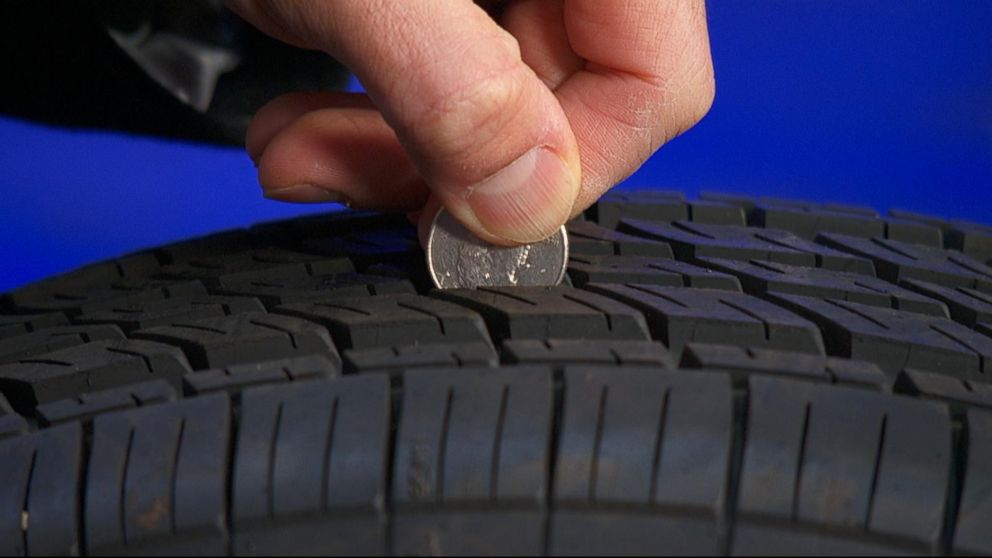
In addition, due to driving techniques or the terrain of the road, many potholes can also cause your rims to fall off, losing balance.
The terrain of the roadWeather is also one of the reasons why your car is out of balance. When it’s cold weather, sudden low temperatures can cause the tires to be under-inflated and reduce the elasticity of the wheels when in contact with the road surface.
Conversely, if you inflate your car too much, you will also cause the tires to wear abnormally and make them unbalanced.
How To Help Balance Tires?After knowing the causes and signs of an unbalanced one, the next thing you need to do is to fix it.
The first step you need to take is to double-check to see what is causing the imbalance. You should put the car on a flat surface and observe which side it tilts. For more convenience, if you want to perform other tasks such as wheel alignment, you can use a 4-post car lift.
Once you know which side it leans on, it’s up to you to start addressing it.
If these are simple errors, you can completely do the repairs yourself at home. For example, the cause of unbalance is a flat wheel.
You will only need to re-inflate to the tire’s recommended limit. Because as mentioned above, over-inflated tires can cause wear to happen faster.
For more tips to handle it at home, check out this video below!
But if your car needs to be realigned, you should ask a professional to handle it for you because they will require quite complicated operations.
If your rim has come off due to an impact, you should have it reattached or replaced by a technician. You can go to professional car repair shops or the place where you bought your car for a warranty.
Repair shopsWhy Balance Tires?Ominous signs can occur if your vehicle is not balanced with tires. On the contrary, if your tires are balanced, you will have a very smooth ride without discomfort or any problems at all.
On the contrary, if your tires are balanced, you will have a very smooth ride without discomfort or any problems at all.
In fact, the problem of wear is something you will never avoid when moving. Therefore, experts recommend regularly rotating the wheel to limit this. The uneven wear of the tires also leads to a difference in weight across the circumference of the tire.
If regularly balanced tires are combined with a consistent tire rotation process, they will last longer. So, you should prevent an unbalanced tire from happening instead of spending a lot of money on replacing it.
FAQsIn fact, you can still drive when the wheels are out of balance, but it will be pretty complex and annoying for you when the noise is emitted, or the car shakes. However, if this condition persists, it can seriously affect your driving and even cause an accident.
As we’ve already mentioned, if you don’t fix your tire imbalance, you’ll run into problems and possibly endanger yourself. Unbalanced tires will not correct themselves if you do not intervene in them. Do not prolong this situation if you do not want to spend a large amount of money to fix it.
Unbalanced tires will not correct themselves if you do not intervene in them. Do not prolong this situation if you do not want to spend a large amount of money to fix it.
Tire wear is something you won’t be able to avoid. If you do not regularly check and adjust it, it is straightforward for your car to lose balance. Add to that your driving habits that can also cause imbalance. The road, if there are many potholes, will also cause this problem.
ConclusionThis article has helped you answer the question: “How to tell which tire is out of balance?” Many reasons can lead to this situation, but if you focus on observing closely and fixing it in time, you will save a lot of money.
Thank you for taking the time to read the article!
This post was last updated onSave article:
In this article:
Each car owner understands why wheel balancing is needed and what will happen if imbalance appears.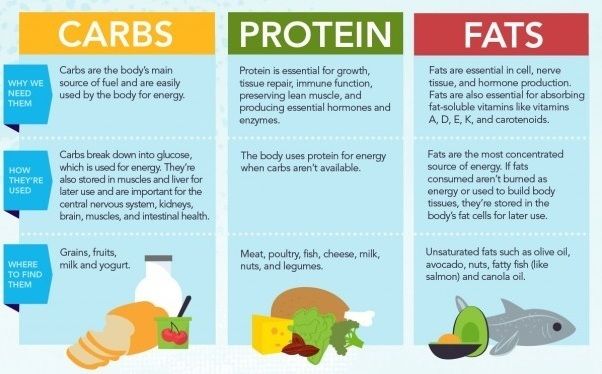 However, not everyone can determine if the car wheels are balanced, how much more you can ride them and when you need to visit a tire shop. We understand what are the signs of an unbalanced wheel and how to fix this problem. nine0003
However, not everyone can determine if the car wheels are balanced, how much more you can ride them and when you need to visit a tire shop. We understand what are the signs of an unbalanced wheel and how to fix this problem. nine0003
Unfortunately, many motorists are negligent about the balancing procedure. You shouldn't do that. After all, the “well-being” of your car depends on how well this procedure is performed.
Since the car wheel is spinning, it must have:
Wheel balancing is a procedure that allows you to minimize imbalance as much as possible. It is performed as follows: special granules are added to the rim, which are attracted to the rubber surface. Thanks to this balancing, signs of wheel imbalance are eliminated.
Only when the signs of wheel imbalance are eliminated, you can be sure that driving a car will not only be comfortable, but also safe.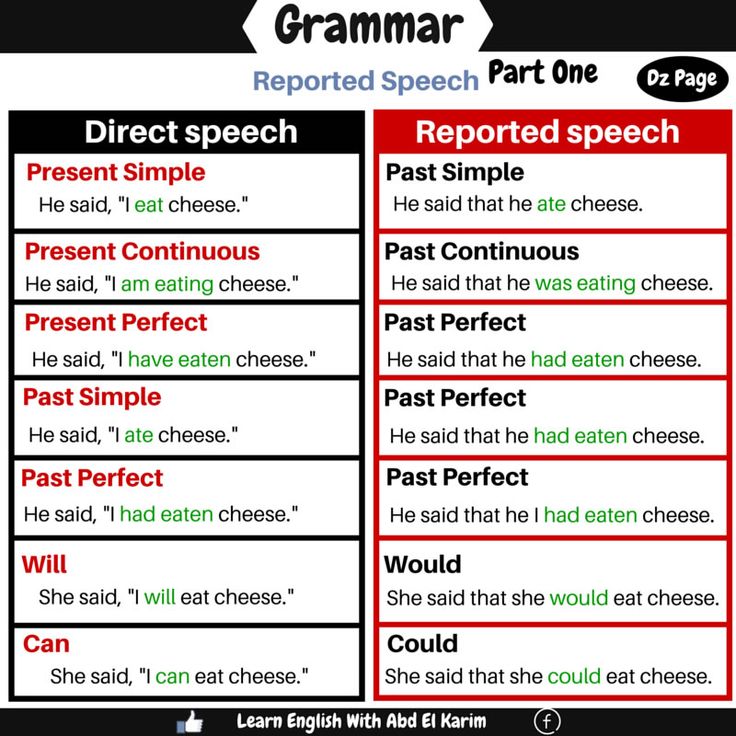 If balancing is carried out from time to time, it is possible to prevent the occurrence of such unpleasant consequences of unbalance as the failure of suspension elements: struts, steering gear and bearings. nine0003
If balancing is carried out from time to time, it is possible to prevent the occurrence of such unpleasant consequences of unbalance as the failure of suspension elements: struts, steering gear and bearings. nine0003
Wheel imbalance is divided into 2 types:
There is also a combined imbalance. In this case, there is a displacement and inclination relative to each other of the axes of inertia and gravity of the wheel.
Photo: Shutterstock
Why do signs of imbalance occur:

Read also
"What is detailing: types of work and criteria for choosing a center"
Read more
How strong the imbalance will be depends on the condition of the tires. After all, the rubber structure is complex and uneven, all this affects the accuracy of centering. nine0003
What is the most common sign of imbalance? Of course it's vibration. When there is an imbalance, the vibration goes from the undercarriage of the car to the passenger compartment. The greater the imbalance, the worse the road and the higher the speed of the car, the stronger the vibration will be.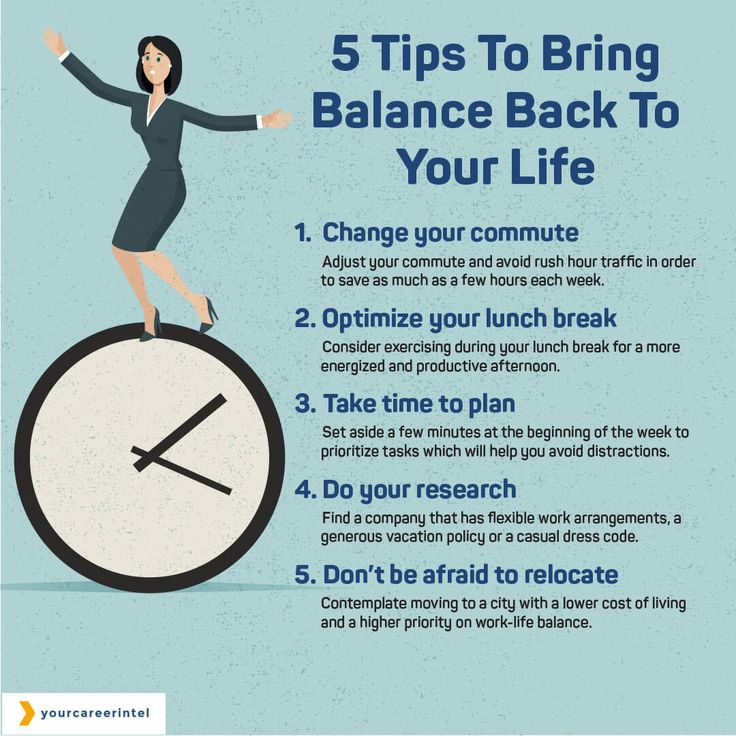 Vibrating movements are different. For example, you may hear a slight noise, or the car may shake so much that it becomes uncomfortable to drive.
Vibrating movements are different. For example, you may hear a slight noise, or the car may shake so much that it becomes uncomfortable to drive.
To find out which car wheel is unbalanced, it will turn out if you distinguish between different types of vibrations. For example, you are driving a car and most of all you feel the vibrating vibrations that go to the steering wheel. So, there is an imbalance in the front wheels. When the rear wheels are unbalanced, unpleasant shaking will be felt by passengers who ride behind. nine0003
Photo: Shutterstock
Why does wheel imbalance occur and what are its symptoms? During spinning, certain areas of the tire experience more pressure than other areas. Due to the fact that the car wheel moves unevenly, vibrating vibrations occur. Areas of the tire that are subjected to more pressure wear out quickly and become fragile. If there are signs of an imbalance in the wheel, which has worn out in certain places, the rubber will begin to bleed air, and you will have to constantly pump up the tires.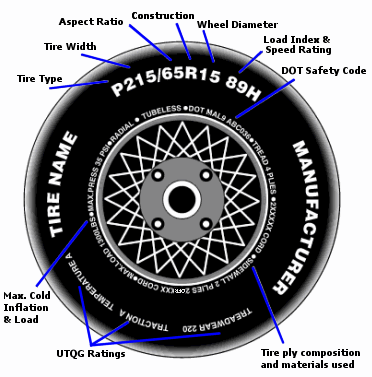 nine0003
nine0003
What other signs of imbalance are there? For example, you notice that your car is suddenly using more fuel. It is most likely due to imbalance. The stronger it is, the more fuel the car consumes. This is especially noticeable when you are driving at high speed.
What can happen if you ignore the signs of imbalance:
The reason for such unpleasant consequences is the vibrating vibrations that arise due to imbalance and affect the car.
Note! If you notice steering wheel wobble, it may not only be a sign of imbalance. It hits the steering wheel if the disk is dented, hernias appear on the tire, the cord is damaged, and the like. However, if the wobble occurs only when you increase speed, then this is a 100% sign of a front wheel imbalance. In this case, it does not matter at all whether the car is rear-wheel drive or front-wheel drive. If there is an imbalance of the rear wheels, then such a sign as the beating of the steering wheel does not appear. nine0003
In this case, it does not matter at all whether the car is rear-wheel drive or front-wheel drive. If there is an imbalance of the rear wheels, then such a sign as the beating of the steering wheel does not appear. nine0003
Most often, signs of an unbalanced wheel are observed when changing winter tires to summer tires (or vice versa). Car owners do not think about what equipment is used for balancing, whether an experienced master. But the quality of the procedure depends on this. For example, an imbalance may appear after 200–300 km of run if the balancing specialist has not washed the rubber. Pieces of dirt will fall off and you will again see signs of wheel imbalance. nine0003
If a poor quality weight was used, steering wheel wobble may occur. Indeed, under the action of centrifugal force, the weight will come off, it will begin to hit the steering wheel.
Photo: Shutterstock
How to detect signs of imbalance? Raise the machine with a jack, and then install a balanced wheel and check.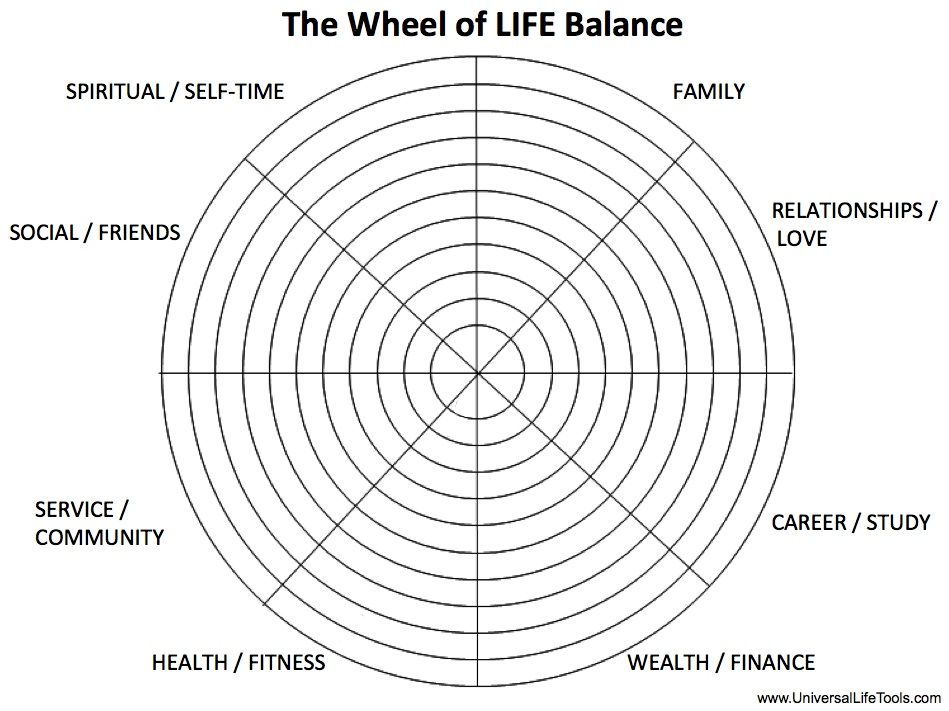 Then, by following a few simple steps, you will find signs of an unbalanced wheel, if any. nine0003
Then, by following a few simple steps, you will find signs of an unbalanced wheel, if any. nine0003
See also
Car phone holders: which one is better?
Detailed
Chalk marks are not collected at one point, but are scattered throughout the tire? There are no signs of imbalance, and there is no need to spend money on balancing.
When you have one set of rims for both winter and summer, then you will have to balance it.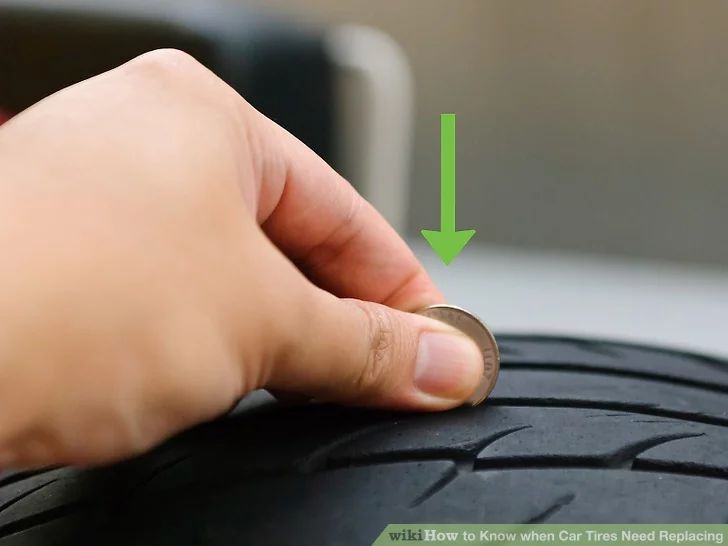 Otherwise, there will be signs of imbalance. Only those motorists who have 2 sets of rims can think about whether it is worth balancing: for winter and for summer. nine0003
Otherwise, there will be signs of imbalance. Only those motorists who have 2 sets of rims can think about whether it is worth balancing: for winter and for summer. nine0003
Do you need wheel balancing after a seasonal tire change?
Let's take a look at the owner's manual for the vehicle. It should indicate that balancing must be performed every 10,000–15,000 kilometers. Is your seasonal mileage less? Then, theoretically, balancing is not required, except in the situations described below.
However, in reality, you need to focus on the "well-being" of the machine. Are there obvious signs of an unbalanced wheel, such as wobble in the steering wheel? So, you can do without balancing. It is not always possible to feel the beating of the rear wheels, but they are not affected as much. One way or another, knowing the signs of imbalance, you can determine whether you need to visit a tire shop. nine0003
What if the car owner independently changes the wheels twice a year? Stick to the tips below. Install a new set of car wheels, ride them for a few days. During this time, the deformation on the rubber that occurred during storage will disappear. There are no signs of an unbalanced wheel, no vibrating vibrations, and does it matter if you are driving fast or slow? So no balancing is needed.
Install a new set of car wheels, ride them for a few days. During this time, the deformation on the rubber that occurred during storage will disappear. There are no signs of an unbalanced wheel, no vibrating vibrations, and does it matter if you are driving fast or slow? So no balancing is needed.
However, this procedure cannot be dispensed with if: nine0003
So, you found signs of an unbalanced wheel and went to a tire shop. How to determine that the master does his job poorly?
Most often, an unscrupulous master does not wash car wheels. At first glance, it may seem that this procedure is not so important. But if there is dirt on the tires and rims, it will not work to balance them. Indeed, even a ten-gram piece of dirt on the wheel, a small pebble that has clogged into the rubber tread, can cause imbalance. nine0003
At first glance, it may seem that this procedure is not so important. But if there is dirt on the tires and rims, it will not work to balance them. Indeed, even a ten-gram piece of dirt on the wheel, a small pebble that has clogged into the rubber tread, can cause imbalance. nine0003
And when you drive at a speed of 100 kilometers per hour, the steering wheel will start to hit, and the suspension elements will experience an unforeseen load, eventually leading to destruction.
Popular articles
How to choose a subwoofer for your car
19.12.2022
282
From top to bottom, obliquely: how to degrease a car body before painting
12/15/2022
220
Chic, shine, beauty: how to remove scratches on a car with your own hands
9. 12.2022
12.2022
281
Without damage: how to reduce the fuel consumption of your car
29.11.2022
258
How much do they pay for advertising on a car
11/25/2022
701
Another reason why wheel imbalance can occur is that the wheel balancer is not positioned correctly. It can simply be placed in a trailer on a wooden surface. But such a machine must be attached with anchor bolts to a flat concrete floor. There should be no vibration. Otherwise, the master will not be able to perform high-quality balancing.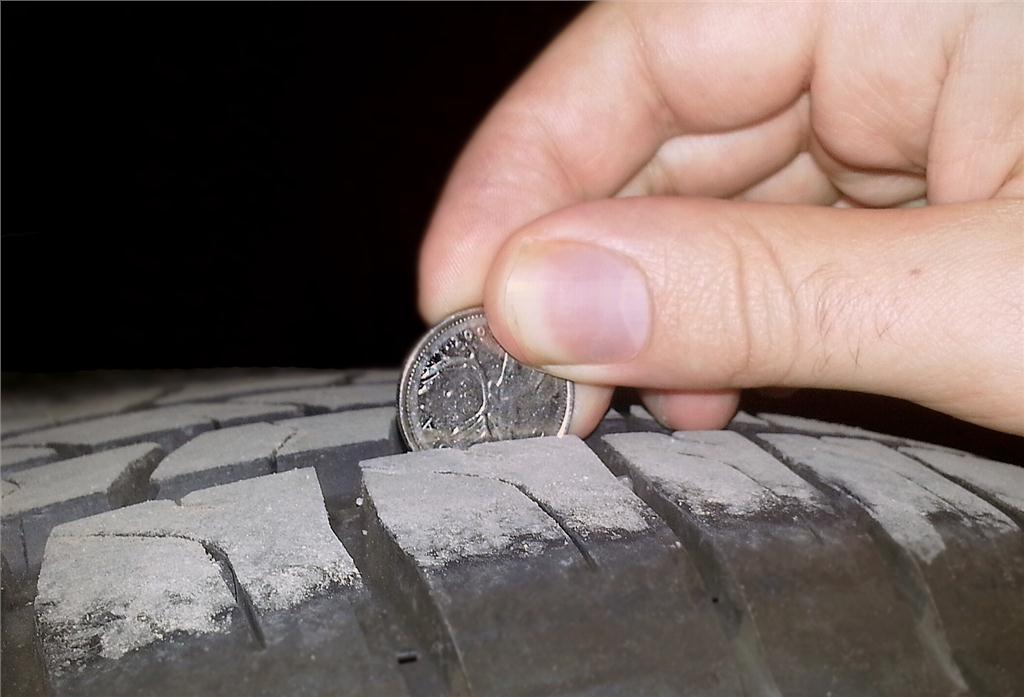 You should not visit mobile tire shops, because there will be no benefit from such balancing. nine0003
You should not visit mobile tire shops, because there will be no benefit from such balancing. nine0003
According to the rules, balancing equipment must be calibrated several times a season. However, in many tire shops, whose owners are not worried about the quality of the services provided, this procedure is not carried out. In addition, it is impossible to calibrate an expensive machine on your own. In order not to waste money on the work of a third-party specialist, sometimes calibration is not carried out. nine0003
If the rims are cast, then the balancing weights are usually glued. To prevent it from peeling off due to vibrations or moisture during a car wash, it is necessary to properly prepare both the weight and the disk. Wipe the disc with a degreasing agent, such as thinner, before sticking the weight. Moreover, the disk must be pre-cleaned of dirt. The area where the weight will be glued, and the load itself is heated with a building hair dryer. nine0003
The area where the weight will be glued, and the load itself is heated with a building hair dryer. nine0003
See also
How to charge your car battery correctly
Read more
This is the correct technology of work, if it is followed, then the weight will never come off, even if water gets on the wheel at a car wash. But, unfortunately, the technology of the procedure is often violated, so at car wash stations you can see a lot of weights that have come off. nine0003
The specialist is in a hurry or lazy, he tells you that nothing terrible will happen even if there is a 5 g imbalance. But when the disc is mounted on the car, there will be signs of imbalance. That is why it is important that after balancing on the monitor of the stand, zero indicators of the deviation of the balance indicators outside and inside the wheel are displayed.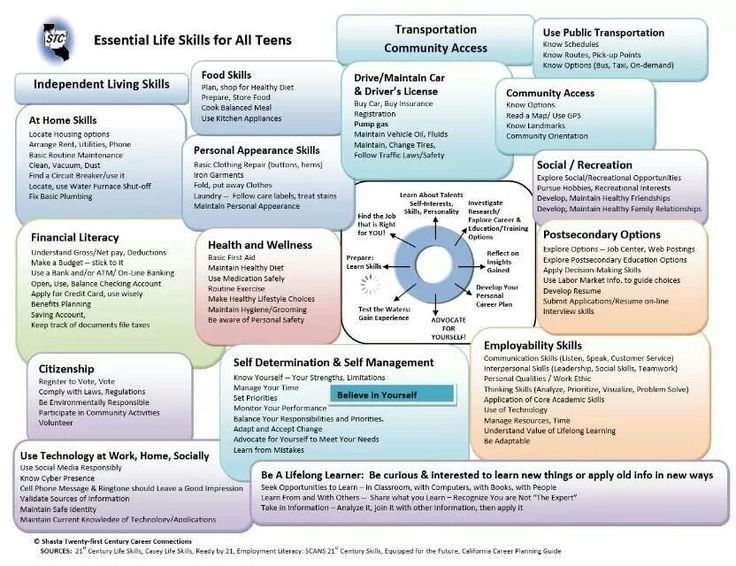
To achieve this result, you will have to peel off and re-stick the weights several times. Maybe the master will even disassemble and clean the inside of the wheel if there is water or dirt left. Or the disk is bent, in which case it needs to be straightened. In any case, there should be no errors. Even a minimal imbalance of 5 g will cause the steering wheel to be beating at high speed, the car will be less controlled, and the suspension elements will quickly fail. nine0003
Working with a wrench, the master spends less time and effort, but driving a car after such a service becomes unsafe. The fact is that a wrench can ruin the threads on studs, nuts and bolts. As a result, there is a threat to the life of the driver and passengers. If the specialist overtightens the nuts and bolts, the seat on the disc will warp, and you will again find signs of an unbalanced wheel. nine0003
Even though the handyman can handle the wrench carefully, the bolt or nut will still be overtightened. And when you want to spin the wheel on the track, you can't do it. Only the latest tire centers use special wrenches, on which you can make the effort minimal. At the end of the work, the master uses a torque wrench to tighten the nuts to the required torque. Remember that with a wrench you can unscrew, not tighten the nuts. nine0003
And when you want to spin the wheel on the track, you can't do it. Only the latest tire centers use special wrenches, on which you can make the effort minimal. At the end of the work, the master uses a torque wrench to tighten the nuts to the required torque. Remember that with a wrench you can unscrew, not tighten the nuts. nine0003
In this case, the centering of the car wheel relative to the hub will be violated. As a result, signs of an unbalanced wheel will appear again. The hub, as well as the suspension elements, will experience increased loads. How not to knock down the center? To do this, tighten the nuts and bolts crosswise.
It often happens that when installing a wheel, the master tightens the nuts, focusing on his feelings and experience. Or use a wrench. Since the material of the discs is quite soft, due to the fact that the nuts are tightened unevenly, they become crooked, there are signs of imbalance.
Or use a wrench. Since the material of the discs is quite soft, due to the fact that the nuts are tightened unevenly, they become crooked, there are signs of imbalance.
How to tighten bolts and nuts on a wheel? A torque wrench is used to perform this procedure. With it, you can make a puff with the desired force, which differs depending on the make and model of the car. You can find out what the effort should be for your car in the vehicle operating instructions. nine0003
It is worth noting that the regular wheelbrace, which is located in the luggage compartment of your car, has such dimensions for a reason. The size of the wrench should be such that, by kneeling and pressing with your hands (without attaching a pipe to the wrench and without pressing hard on it), you can tighten the nuts on the wheel with the necessary force. And it does not matter whether a man or a woman performs this procedure.
In the same way, you should be able to unscrew the wheel with a regular wheel wrench.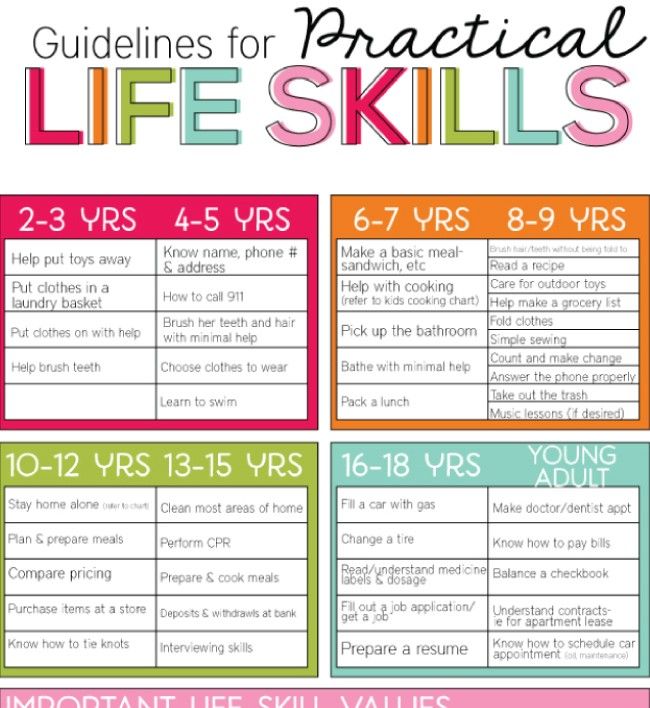 Of course, if at the tire fitting the specialist used a torque wrench and did not overtighten the nuts. nine0003
Of course, if at the tire fitting the specialist used a torque wrench and did not overtighten the nuts. nine0003
“Six months ago, a friend advised me (after balancing was done in the tire shop) to put the wheel on the machine and spin it. After such a check, I was shocked. Before removing the wheel, the indicators were “zero”, when the master removed the wheel, and I asked to put it back on, the indicators after balancing were 10–50 g! The unfortunate specialist realized too late what the purpose of this check was. nine0003
“I read in one authoritative car magazine that it is possible to balance the wheels with high quality only if adapters are used that play the role of a car hub. Thus, the disk is put on studs, and not on a cone.
“In terms of wobble, my car has soft Yokohama tires, 18-inch rims, and the suspension is quite stiff. It doesn’t hit the steering wheel, even if the imbalance is 35 g. There is one sign of imbalance: when I brake smoothly at a speed of 100 km / h, then a beating occurs. But at a speed of 150 km / h, there is no beating when braking. nine0003
It doesn’t hit the steering wheel, even if the imbalance is 35 g. There is one sign of imbalance: when I brake smoothly at a speed of 100 km / h, then a beating occurs. But at a speed of 150 km / h, there is no beating when braking. nine0003
Read also
"Accident on carsharing: procedure and possible payments"
Read more
“Before you glue the weights, you need to set the tires on the disks according to the beating. When the wheel is spinning, the beating is visible in height. In this case, you need to rotate the rubber on the disk so that it beats less. Then you have to use a lot more weights. But it's not profitable for tire fitters. One more piece of advice: when you have done balancing a new wheel, you should balance it again after 1,000 km of run, when the rubber lies on the disk, and there will definitely be no signs of imbalance. nine0003
nine0003
“You can talk about this topic endlessly. My wheels from Japan were assembled for 2 seasons, there were no signs of imbalance. And when the master balances the wheels poorly, the steering wheel beats. Finding an experienced specialist today is not so easy.”
Many drivers have experienced the effects of wheel imbalance. One of them is vibrations, which increase as the speed of the car increases. The problem of imbalance is also experienced by drivers who have changed rims and tires, as well as those involved in traffic accidents. Today Avto.pro will analyze in detail the types of wheel imbalance, the characteristic signs of this problem, as well as all the possible consequences. nine0003
Wheel imbalance is the deviation of the axis of rotation of an automobile wheel relative to the axis of inertia, which provokes an uneven distribution of masses along the trajectory of rotation.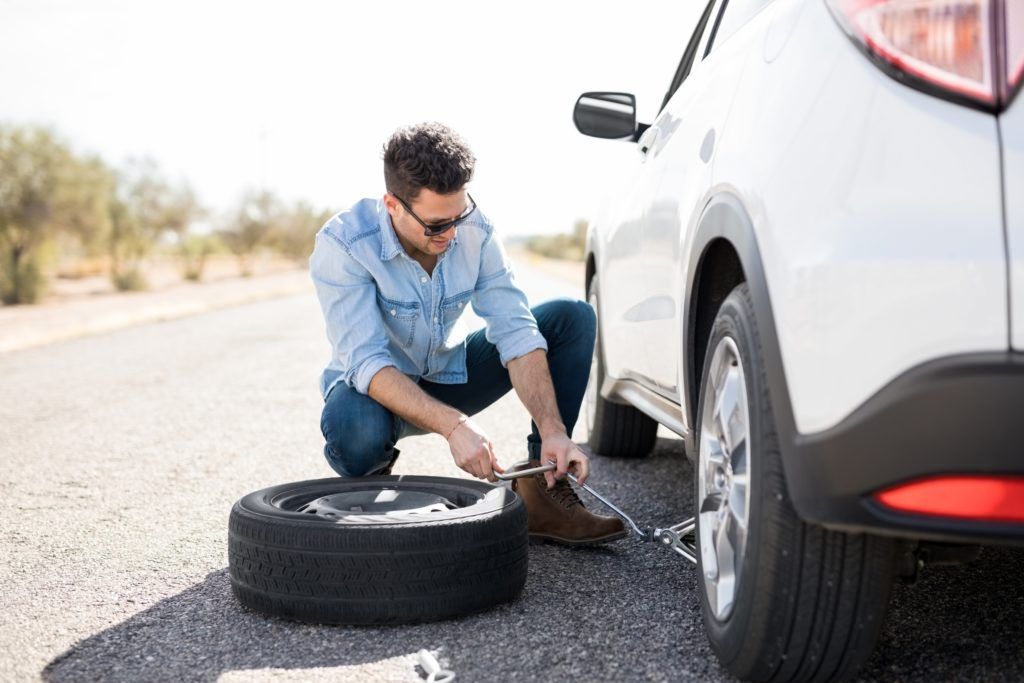 Consequences: beating of wheels, steering, intense and uneven tire wear. Distinguish between static, dynamic and combined imbalance. The concepts of "imbalance" and "unbalance" usually refer to those elements of the car that perform rotational movements.
Consequences: beating of wheels, steering, intense and uneven tire wear. Distinguish between static, dynamic and combined imbalance. The concepts of "imbalance" and "unbalance" usually refer to those elements of the car that perform rotational movements.
The wheel is just such an element. It has:
If the rotating masses are out of balance, an imbalance occurs. However, along with the rim also rotates, for example, the tire! It contributes to the node imbalance . A wheel can be called balanced if its axis of rotation coincides with the main central axis of inertia. At the same time, a small error is still present, so that any of the wheels has a slight imbalance. If it is exceeded, the driver will face problems. There are such types of imbalance:

Static imbalance reflects the uneven distribution of masses along the axis of rotation. If the unevenness is too great, the unbalanced masses will create their own centrifugal force, tending to move the wheel in vertical plane . In this case, the suspension, leveling such movements, suffers especially strongly. For static balancing, a weight is attached opposite the unbalanced mass.
The presence of dynamic imbalance indicates the uneven distribution of masses in the plane of the wheel. In the case of a statistical imbalance, the centrifugal force constantly created moments that were variable in direction, then here the forces are multidirectional. It is possible to eliminate such an imbalance by special stand .
One of the most common causes of imbalance is mechanical damage to wheels. If they are dented, unbalanced masses will appear in the discs. The same thing happens when mud and snow stick , but the driver can easily fix the problem at the car wash. However, tires have the greatest influence on the balance of a car's wheels. They are removed from the center of rotation and the result of a serious imbalance can be a strong vibration of the wheels, and hence the body. Tire balance is affected by:
However, tires have the greatest influence on the balance of a car's wheels. They are removed from the center of rotation and the result of a serious imbalance can be a strong vibration of the wheels, and hence the body. Tire balance is affected by:
A point that is often overlooked: stones caught in the tread also affect the balance. Special case: imbalance resulting from incorrect mounting of a tire or rim. In the latter case, it is enough to remove the disc and install it correctly, following the fit to the brake mechanism. There are also more interesting cases. At mismatch diameters of the central hole of the disc and the hub is also possible imbalance. Most often it appears on large diameter discs. Often the problem can be eliminated with the help of centering rings (arch supports).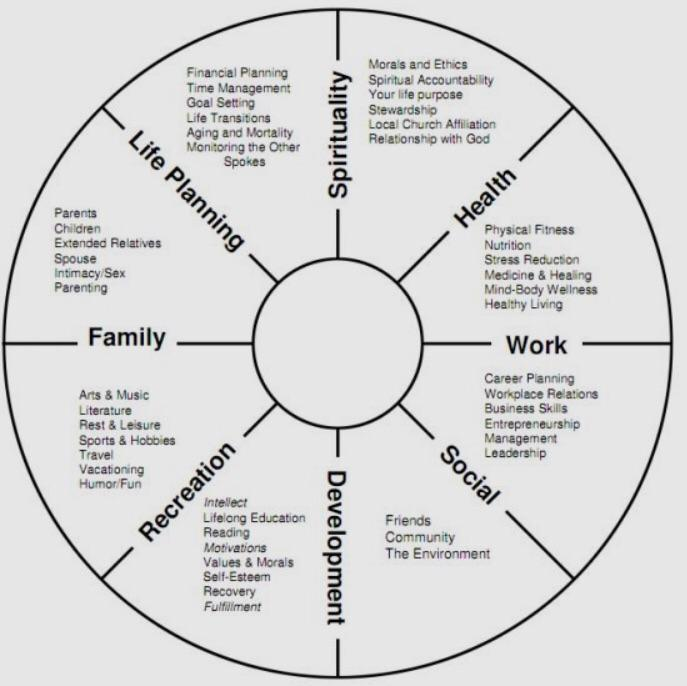
The first and most obvious consequence: the appearance of vibrations. They make themselves known when moving. With a slight imbalance, they can be felt already at a speed of 80-100 km / h . And with a strong one, even at a speed of 40 km / h or less. The nature of the vibrations changes with a set speed, vibrations and shocks of the steering wheel and pedals appear. In the worst case, it will be violated directional stability . This not only creates inconvenience, but also affects the safety of the ride. The following imbalance options are possible:
In the first case, vibrations of the steering wheel and pedals are usually noted , a slight loss of directional stability. In the second case, there will also be vibrations, but not always strong, but the car will be pulled to the side during quick turns. In the third case, all of the above is observed, noise appears in the cabin. In summary, we note the following symptoms of imbalance:
In the third case, all of the above is observed, noise appears in the cabin. In summary, we note the following symptoms of imbalance:
If these symptoms are ignored for a long time, one or more units may break. Firstly, the rubber-metal elements of the chassis and bearings wear out faster. Not only hub, but also tripods of CV joints. Further, this affects most elements of the chassis. Secondly, there is a fast and uneven tire tread wear. Thirdly, the risk of breakage of elements of the brake system increases.
An important point : if you feel vibrations only when braking, wheel imbalance is not its main cause. We recommend removing the wheels and inspecting the brake discs. If at least one is deformed, replace both corresponding axles. When the caliper is jammed, vibrations also appear. The problem is eliminated by cleaning, troubleshooting, installing new guides and pistons, as well as applying lubricant. This material will help you understand brake lubrication. nine0003
When the caliper is jammed, vibrations also appear. The problem is eliminated by cleaning, troubleshooting, installing new guides and pistons, as well as applying lubricant. This material will help you understand brake lubrication. nine0003
Experts disagree on how often to balance the wheels of a car with no modifications to the chassis. In this case, the imbalance often occurs in the course of tire wear, and not due to a violation of the integrity of the rim. Although the latter option is also possible. Here's what you should rely on:
Sporty riders should have their wheels balanced more often than others – at least twice a year. Usually, drivers ignore this recommendation, as a result of which body vibrations appear .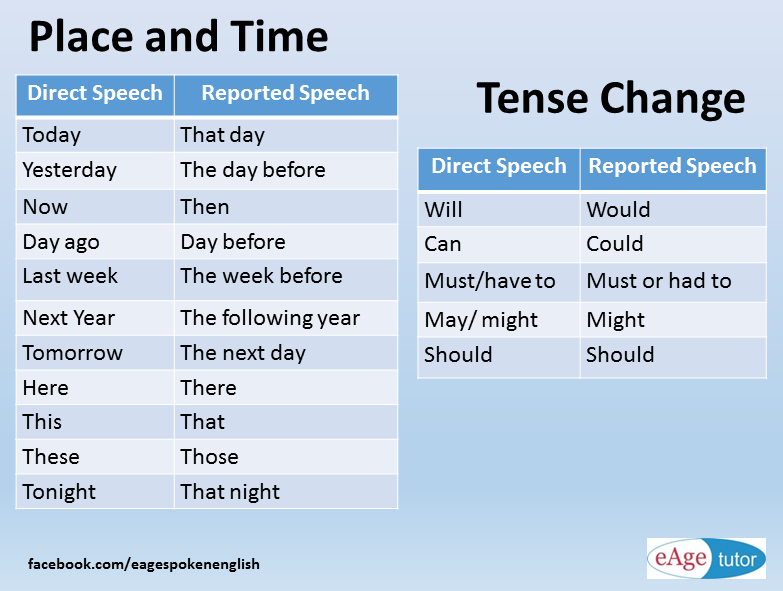 They indicate both an imbalance and a breakdown of specific components: an internal CV joint, pillows of the power unit and gearbox, fasteners and exhaust dampers. nine0003
They indicate both an imbalance and a breakdown of specific components: an internal CV joint, pillows of the power unit and gearbox, fasteners and exhaust dampers. nine0003
Tire services undertake this work. If desired, the driver can balance the wheel on their own using self-purchased weights, but we recommend contacting specialists. The driver can only tighten the fasteners and clean the rim from dirt. However, experts also make mistakes. Once in the service, follow the following:
Unfortunately, in order to accurately speak about the wheel balance, has to visit the service. Focusing on external signs and characteristic malfunctions (vibration, steering wheel shaking), the driver cannot always determine which of the wheels are unbalanced and whether this problem is really relevant. Many experts recommend contacting specialists when even slight vibrations appear at speeds of 80-100 km / h. nine0003
Focusing on external signs and characteristic malfunctions (vibration, steering wheel shaking), the driver cannot always determine which of the wheels are unbalanced and whether this problem is really relevant. Many experts recommend contacting specialists when even slight vibrations appear at speeds of 80-100 km / h. nine0003
In order to level the effect of unbalanced masses, small weights are attached to the rim. Tire services buy weights in large quantities. They are usually packaged in packs of 100 pcs. The following options are considered:
Board Brake Board
15 Hatchback (03. 71 - 10.79)
71 - 10.79)
Distilled water 100 Hatchback (Metro) (11.90 - 12 As a rule, self-adhesive weights are used when balancing alloy wheels . However, due to the ease of use, they are used when working with almost any discs of passenger cars. In some cases, 9 are required0351 thin self-adhesive weights. The weight of most weights is a multiple of 5 grams. When choosing, also take into account:
What does not take into account when choosing is the method of packaging, the composition of the kit, as well as the quality of the surface treatment of the products (color and protective coatings). Good weights are produced by Tech International, Franken, Reifen, Clipper. Goods of "noname" brands are also found. There is a difference in quality, but not significant.